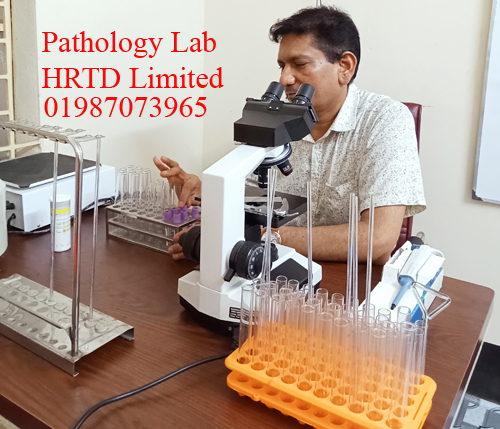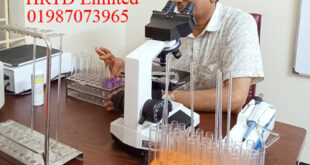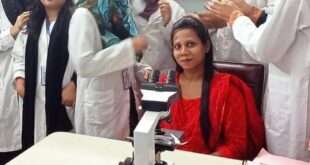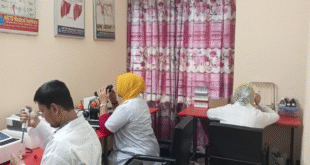Microbiological Test
Microbiological Test. Mobile Phone Number 01987073965, 01797522136. A microbiological test identifies, quantifies, and analyzes microorganisms like bacteria, viruses, fungi, and parasites to ensure product safety, diagnose infectious diseases, and monitor environmental quality. These tests are used in various industries, including food, pharmaceuticals, cosmetics, healthcare, and environmental monitoring, to detect pathogens, monitor sterility, and guide appropriate antimicrobial treatments.

Key methods include direct screening, molecular biology techniques, immunoassays, and culture tests, with applications ranging from food safety and sterile product validation to diagnosing infections and monitoring water quality.
What is Microbiological Testing?
Microbiological testing involves the scientific analysis of microorganisms to understand their impact and characteristics. It’s used to:
- Identify: the specific types of microorganisms present.
- Quantify: their numbers.
- Analyze: their characteristics and potential effects.
Why is it Performed?
Microbiological tests are crucial in several fields for different reasons:
- Product Safety:In the food, beverage, pharmaceutical, and cosmetic industries, these tests ensure products are safe for consumption and use by detecting contaminants and verifying sterility.
- Public Health:Clinical settings use microbiological tests to diagnose infectious diseases, identify the causative agents, and select the most effective antimicrobial treatment.
- Environmental Monitoring:These tests help assess water quality, monitor airborne contaminants, and check soil health to safeguard ecosystems.
- Regulatory Compliance:Industries use testing to meet regulatory standards and demonstrate due diligence for product safety.
Types of Microbiological Tests
Different tests exist depending on the application and required level of detail:
- Culture Tests:Involves growing microorganisms on a suitable medium to identify and count them.
- Molecular Biology Tests: Uses methods like PCR or DNA fingerprinting to detect and identify microbial genetic material.
- Immunoassays: Utilizes antibodies to detect specific microbial antigens or antibodies produced by the host.
- Direct Screening Tests: Rapid tests designed for quick detection of microorganisms or their byproducts.
Where Microbiological Testing is Applied
- Clinical Laboratories: Analyzing blood, urine, and wound samples to diagnose infections.
- Food and Beverage Industry: Testing raw materials and finished products for pathogens and spoilage organisms.
- Pharmaceutical and Cosmetic Industries: Ensuring the sterility of products and cleanroom environments.
- Environmental Agencies: Monitoring water purity and air quality for contaminants.
Culture Test
A “culture test” is a microbiological test that identifies microorganisms like bacteria, fungi, or parasites in a sample of bodily fluid or tissue to diagnose an infection. The sample is grown in a lab, and if microbes are present, further sensitivity tests determine which medications, such as antibiotics, will be most effective against the specific pathogen causing the infection.
Purpose
- Diagnose Infections:Confirm if an infection is present and identify the specific microorganism causing it.
- Guide Treatment:Determine the most effective antibiotic or antifungal to treat the infection.
- Monitor Treatment:Track the effectiveness of ongoing treatment for a lung or airway infection.
Common Types of Culture Tests
- Blood Culture:Detects bacteria or fungi in a blood sample to check for sepsis or other blood infections.
- Urine Culture:Checks for bacteria in a urine sample to diagnose urinary tract infections (UTIs).
- Throat Swab:Identifies bacteria, like Streptococcus, that cause strep throat.
- Wound Culture:Examines pus or secretions from a wound or burn to identify the cause of infection.
- Sputum Culture:Analyzes mucus to find bacteria or fungi causing lung infections like pneumonia or tuberculosis.
- Stool Culture:Identifies bacteria or parasites in a fecal sample, often used for persistent diarrhea.
How a Culture Test Works
- 1. Sample Collection:A medical professional collects a sample from the affected body site, such as blood, urine, or a swab.
- 2. Incubation:The sample is placed in a nutrient-rich environment in the lab, which allows any present microorganisms to grow.
- 3. Identification:Once grown, the microbes are examined under a microscope and tested using stains, chemicals, or molecular tests to identify the specific organism.
- 4. Sensitivity Testing:If the organism is a bacterium, it’s exposed to various antibiotics to see which ones are most effective in stopping its growth.
Results Interpretation
- Negative Culture: No or very low microbial growth, which may indicate no infection or a low bacterial load.
- Positive Culture: The presence of microbial growth confirms an infection.
- Sensitivity Results: Indicates which antibiotics or antifungal drugs the identified organism is sensitive (effective against) or resistant to.
Molecular Biology Test
Molecular biology tests detect, analyze, and identify molecules like DNA and RNA to diagnose diseases, determine genetic risk, and identify pathogens, often using techniques such as Polymerase Chain Reaction (PCR), DNA sequencing, and next-generation sequencing (NGS). These highly accurate and sensitive tests can detect genetic mutations in diseases like cancer, identify infectious agents such as viruses, and guide personalized treatment decisions.
How Molecular Biology Tests Work
- Sample Collection: A sample of blood, tissue, or other body fluid is collected.
- Nucleic Acid Extraction: DNA and RNA are extracted from the cells in the sample.
- Analysis: Molecular techniques are used to analyze the extracted genetic material.
- Detection and Identification: These techniques detect specific DNA or RNA sequences that indicate a disease, genetic mutation, or pathogen.
Molecular Biology Tests and Techniques
- Polymerase Chain Reaction (PCR):A widely used method to detect the genetic material of pathogens by amplifying specific DNA or RNA segments.
- DNA Sequencing:Determines the order of the building blocks (bases) in the DNA to identify specific genetic variations.
- Sanger Sequencing: The traditional “gold standard” for sequencing one or a few genes at a time.
- Next-Generation Sequencing (NGS): A newer technology that sequences millions of DNA fragments simultaneously, including whole-genome or whole-exome sequencing.
- Multiplex Ligation-Dependent Probe Amplification (MLPA):A PCR-based test that detects specific DNA deletions and duplications across multiple targeted sections.
Applications of Molecular Biology Tests
- Infectious Diseases:Identifying specific pathogens, like viruses, that are difficult to culture.
- Genetic Disorders:Detecting genetic mutations that may increase a person’s risk for developing certain conditions.
- Cancer:Diagnosing cancer, predicting treatment effectiveness, and determining the best therapeutic options (biomarker testing).
- Personalized Medicine:Guiding treatment decisions based on an individual’s unique genetic makeup.
- Forensics and Paternity Testing:Identifying individuals for legal or familial identification.
Microbiological Test Names
Microbiology tests include a wide range of culture and identification tests (e.g., blood culture, stool culture, urine culture), susceptibility testing to determine antibiotic effectiveness, staining methods (e.g., Gram stain, Acid-Fast Bacilli (AFB) stain), and biochemical tests (e.g., catalase test) to identify specific microorganisms. Other types of tests involve molecular methods like PCR, serological tests to detect antibodies, and microscopic examinations.
Common Tests:
- Culturesare performed on various bodily fluids and swabs to grow and identify microorganisms.
- Stool Culture: Used to detect bacteria or parasites in stool samples.
- Blood Culture: Used to identify bacteria or fungi in the bloodstream.
- Urine Culture: Detects infections in the urinary tract.
- Sputum Culture: Identifies infections in the respiratory tract.
- Swab Cultures: Performed on samples from wounds, throats, vaginas, eyes, and ears.
- Susceptibility Testing:Determines which antibiotics or antifungals are effective against a specific microbe.
- Microscopic Stains: Used to differentiate types of bacteria.
- Gram Stain: Differentiates bacteria into Gram-positive (purple) and Gram-negative (pink/red) groups.
- Acid-Fast Staining (AFB Stain/Ziehl-Neelsen stain): Identifies acid-fast bacteria, such as those causing tuberculosis.
- Biochemical Tests: Help identify specific bacteria based on their metabolic properties.
- Catalase Test: Detects the enzyme catalase, often used in differentiating bacteria.
- Coagulase Test: Used to identify Staphylococcus aureus.
- Molecular Tests: Employ techniques like PCR to detect microbial DNA or RNA.
- Serology Tests: Detect specific antibodies or antigens in the blood to diagnose infections.
- Anti-streptolysin O test (ASOT): Detects antibodies against streptococcal infections.
- VDRL: A test for syphilis.
Common Sample Types:
- Blood
- Urine
- Stool
- Sputum
- Cerebrospinal fluid (CSF)
- Swabs (Throat, wound, eye, ear, nasal, vaginal, urethral)
- Tissue and biopsies
- Aspirates from abscesses or deep wounds
Stool Culture is an Important Microbiological Test
- Persistent Diarrhea: Diarrhea that lasts more than a few days or is accompanied by blood or mucus.
- Severe Abdominal Pain: Especially when accompanied by fever or dehydration.
- Recent Travel: Exposure to contaminated food or water while traveling to other countries.
- Food Poisoning Symptoms: Nausea, vomiting, and diarrhea following the consumption of suspected contaminated food.
- Weakened Immune Systems: Infections in individuals with compromised immune systems.
- Sample Collection: A healthcare provider gives you a special container with a lid. You’ll place a clean sheet or plastic over the toilet bowl and collect a sample (about the size of a walnut) from a bowel movement onto it. Use the provided spatula to transfer a portion of the stool into the container.
- Avoid Contamination: Be careful not to mix urine with your stool sample.
- Secure the Sample: Close the container tightly with its lid.
- Lab Analysis: The sample is then sent to a lab.
- Incubation: Lab technicians place small portions of the stool on special nutrient-rich dishes, which encourage the growth of potential germs.
- Identification: After a period of growth, technicians examine the sample for bacterial colonies using a microscope and chemical tests.
- Diagnosis: If disease-causing germs are found, they are identified, allowing the doctor to make a diagnosis and determine the appropriate treatment.
Blood Culture is the Most Important Microbiological Test
A blood culture detects bacteria or fungi in the blood, indicated by symptoms like fever, chills, and confusion, often due to a spreading infection or systemic illness. The procedure involves taking sterile blood samples from a vein into bottles containing special broth, which is then sent to a lab to identify and grow microorganisms. This helps diagnose the specific pathogen and guide antibiotic or antifungal treatment.
What is a Blood Culture?
A blood culture is a laboratory test to determine if a bloodstream infection is present. It detects and identifies microorganisms like bacteria or fungi that may have entered the blood from an infection elsewhere in the body.
Why is a Blood Culture Done (Causes)?
A blood culture is performed when a healthcare provider suspects a systemic or widespread infection, such as:
- Fever and Chills:High fever, chills, and sweating are common signs of infection.
- Sepsis:This is a life-threatening response to an infection that spreads to the bloodstream and can lead to organ failure.
- Infections in Specific Locations:Blood cultures are used to diagnose infections like pneumonia, cellulitis (a skin infection), urinary tract infections (UTIs), or prosthetic device infections.
- Conditions Increasing Risk:Patients with weakened immune systems, those who have recently undergone surgery, or individuals with certain medical conditions like endocarditis (infection of the heart’s inner lining) are more likely to need a blood culture.
Procedure of a Blood Culture
- 1. Preparation:A healthcare professional will prepare the skin over a vein, usually in the arm, using an antiseptic to prevent contamination.
- 2. Blood Collection:A sterile needle is inserted into the vein to collect blood samples.
- 3. Bottles:The blood is collected into special bottles containing a broth designed to promote the growth of any microorganisms present.
- 4. Multiple Sets:At least two sets of blood cultures are usually taken from different sites to increase the chance of detecting the infection.
- 5. Incubation:The bottles are sent to a laboratory and incubated to allow any bacteria or fungi to grow.
- 6. Identification:If microorganisms grow, further tests are done to identify the specific germ.
- 7. Treatment Guidance:The results help the doctor determine the most effective antibiotic or antifungal medication.
Urine Culture is another Important Microbiological Test
A urine culture detects the specific bacteria or yeast causing a urinary tract infection (UTI) by growing microorganisms from a urine sample in a lab. It is used to diagnose UTIs, identify the infecting pathogen, and determine the most effective antibiotic treatment. The procedure involves collecting a midstream, clean-catch urine sample into a sterile container after washing and cleaning the genital area, then sending it to the lab to be incubated and analyzed for microbial growth.
What is a Urine Culture?
- A urine culture is a laboratory test that uses a urine sample to identify if any germs, like bacteria or yeast, are present and causing an infection.
- The test helps diagnose urinary tract infections (UTIs) and determines which specific microorganism is responsible for the infection.
Causes of a Urine Culture
A provider may order a urine culture when a person has symptoms of a urinary tract infection, which include: Pain or burning when urinating, A frequent urge to urinate, Cloudy or bloody urine, and A foul-smelling urine.
Procedure of a Urine Culture
The urine collection process, also known as a “clean-catch” or “midstream” sample, is crucial to prevent contamination from the skin.
- Prepare: Wash your hands thoroughly.
- Clean: Gently clean the area around your urethra with an antiseptic wipe. For males, retract the foreskin if uncircumcised.
- Collect Sample:
- Start urinating a small amount directly into the toilet to flush out any initial bacteria.
- Stop the flow and then place the provided sterile container into the urine stream, filling it about halfway.
- Finish urinating into the toilet.
- Seal: Securely replace the lid on the container and avoid touching the inside.
- Label & Send: Label the container as instructed and take it to the lab for analysis.
In the Lab
- A laboratory technician will place the urine sample on a nutrient-rich medium to encourage the growth of any microorganisms.
- After 24 to 72 hours of incubation, the lab examines the sample under a microscope to identify the types of germs.
- A urine culture sensitivity test may also be performed to test the effectiveness of different antibiotics against the identified bacteria.
Sputum Culture is a Microbiological Test for the diagnosis of RTI
A sputum culture identifies bacteria, fungi, or other germs causing a respiratory infection by placing a deep cough phlegm sample in a lab-grown culture medium. The test is used to diagnose and guide treatment for infections like pneumonia, bronchitis, or tuberculosis. The procedure involves collecting a deep-lung sputum sample in a sterile cup, which is sent to a lab and incubated to encourage germ growth, allowing for identification and sensitivity testing to determine the best antibiotics.
What is a Sputum Culture?
A sputum culture is a laboratory test that examines a sample of sputum (phlegm from the lungs) to find and identify microorganisms, such as bacteria or fungi, that may be causing a lung or respiratory tract infection.
Causes for Sputum Culture
Your doctor might order a sputum culture to diagnose or investigate a variety of respiratory conditions, including:
- Infections: Such as pneumonia, bronchitis, or tuberculosis.
- Chronic conditions: To identify or monitor infections in conditions like cystic fibrosis or chronic obstructive pulmonary disease (COPD).
- Persistent symptoms: If you have a persistent cough, chest pain, or difficulty breathing.
Sputum Culture Procedure
The procedure involves the following steps:
- Sample Collection:You will be asked to cough deeply to bring up sputum from your lungs, not just saliva from your mouth.
- Container:You will spit the sputum into a sterile cup provided by your healthcare provider.
- Preparation:It is often best to collect the sample first thing in the morning, after rinsing your mouth.
- Induction (If needed):If you have difficulty coughing up sputum, you may be asked to inhale a special saline mist to help loosen the phlegm and induce a cough.
- Laboratory Analysis:The sample is sent to a laboratory where a microbiologist places a portion of the sputum onto a nutrient-rich culture plate.
- Incubation:The plate is then incubated for several days to allow any microorganisms to grow.
- Identification and Testing:The lab will then identify the type of germ that has grown and may perform an antimicrobial susceptibility test to see which antibiotics will be most effective in treating the infection.
Swab Culture is done for diagnosis of Various Infections
Swab cultures identify infectious microorganisms by culturing samples collected with a sterile swab from body sites like wounds or the throat, helping to guide antibiotic or antifungal treatment. The “cause” is not the culture itself but the actual infection, which is detected by growing the organisms from the swab in a lab. A positive culture, showing significant microbial growth, indicates the presence of pathogens, while a negative or normal result suggests no infection or only normal skin flora.
What Swab Cultures Are
- A swab culture is a diagnostic test where a sterile swab is used to collect a sample from a potential infection site, such as a wound, throat, or nasal passage.
- The sample is then sent to a laboratory and placed on a culture plate to allow any bacteria or fungi to grow.
- After culturing, tests are performed to identify the specific types of microorganisms present.
- A sensitivity test (C/S) determines which antibiotics or antifungals are most effective against the identified pathogens.
Causes for Swab Cultures
The swab culture itself isn’t a cause; rather, it’s a response to the potential “cause” of a suspected infection. The causes that lead to a swab culture being performed include:
- Clinical Signs of Infection:A doctor may order a culture when there are visible signs of infection, such as increased redness, disproportionate pain, excessive wound discharge, or an unusual odor.
- Suspected Pathogens:Cultures help identify specific bacteria, fungi, or viruses that could be causing illness, such as Staphylococcus aureus from a skin lesion or Streptococcus pyogenes from a throat infection.
- Treatment Guidance:The results guide treatment decisions, helping clinicians choose the most effective antibiotics or antifungal medications, especially in chronic wounds or recurrent infections.
- Differentiating Colonization from Infection:In chronic wounds, surface swabs can sometimes reveal colonization (the presence of microorganisms without actual infection). Cultures help distinguish this from an active, invasive infection that requires treatment.
Serology Test
Serology tests are
blood tests used to detect antibodies and antigens, which are parts of the immune response to an infection or disease. Antibodies are proteins produced by your immune system to fight off pathogens like viruses and bacteria. By analyzing antibodies in the clear part of your blood, called serum, these tests provide a window into your immune system’s activity.
How serology tests work
- A blood sample is taken from a vein in your arm, or in some cases, a finger prick is sufficient.
- The sample is sent to a lab to be analyzed for specific antibodies or antigens.
- The tests use a known antigen (a component of a virus, for instance) to see if it reacts with antibodies present in your blood. A positive reaction confirms that you have encountered that pathogen.
Different types of antibodies indicate different stages of an infection:
- IgM antibodies are produced first, in high quantities, soon after an infection begins. They fade over a few weeks or months and suggest a recent or active infection.
- IgG antibodies are produced later and persist in the bloodstream long after the infection is gone. Their presence indicates a past infection or prior vaccination.
What serology tests can diagnose
Serology tests are used for a wide range of medical purposes, including:
- Infectious diseases:
- Hepatitis A, B, and C
- HIV
- Measles, mumps, and rubella
- Lyme disease
- Syphilis
- Mononucleosis
- COVID-19
- Autoimmune diseases: By detecting autoantibodies (antibodies that mistakenly attack the body’s own tissues), serology can help diagnose conditions like lupus and rheumatoid arthritis.
- Immunity status: They can verify if a vaccination provided sufficient protection against a disease.
- Blood typing: These tests are used to determine a person’s blood type (A, B, AB, or O and Rh factor) for transfusions and organ transplants.
Common types of serology tests
Several laboratory techniques are used to perform serology, including:
- Enzyme-Linked Immunosorbent Assay (ELISA): A widely used test that detects and measures specific antibodies or antigens using an enzyme that produces a measurable color change.
- Agglutination tests: Used for blood typing, this test looks for visible clumping when antibodies bind to antigens.
- Western blot: A more complex test often used to confirm the results of an ELISA by separating proteins and detecting specific ones with antibodies. It is used to confirm HIV or Lyme disease diagnoses.
- Chemiluminescence immunoassays (CLIA): Highly sensitive tests that detect antibodies using a chemical reaction that produces light.
Serology vs. molecular tests
It is important to understand the key difference between serology and molecular tests, as they are used to detect different things:
- Serology tests detect the body’s immune response to a pathogen (e.g., antibodies). This makes them useful for identifying a past infection or checking immunity.
- Molecular tests (like a PCR test) detect the pathogen’s genetic material (DNA or RNA) itself. These tests are used to diagnose a current, active infection.
Gram Staining
Gram staining is a laboratory technique that classifies bacteria based on their cell wall composition, resulting in either Gram-positive (purple) or Gram-negative (pink) bacteria. The procedure involves creating a smear on a slide, heat-fixing it, and applying a primary stain (crystal violet), a mordant (Gram’s iodine), a decolorizer (alcohol/acetone), and a counterstain (safranin). Gram-positive bacteria retain the purple stain, while Gram-negative bacteria are decolorized and then take up the pink counterstain.
Step-by-step Gram Staining Procedure
- 1. Prepare the Smear:On a clean microscope slide, spread a drop of a bacterial culture to create a thin film.
- 2. Heat-Fix:Air dry the smear and then briefly pass the slide over a flame to heat-fix the bacteria to the slide, which prevents them from washing off.
- 3. Apply Crystal Violet:Flood the slide with crystal violet and let it sit for about 1 minute. Rinse with water to remove the excess stain.
- 4. Apply Gram’s Iodine:Cover the smear with Gram’s iodine and allow it to sit for about 1 minute. This forms a complex with the crystal violet, making it less soluble. Rinse with water.
- 5. Decolorize:Apply a decolorizing agent, such as 95% ethanol or acetone, until the runoff is clear. This step removes the crystal violet-iodine complex from Gram-negative cells. Immediately rinse with water to stop the decolorizing process.
- 6. Apply Safranin:Flood the slide with the counterstain, safranin, and let it sit for about 1 minute. The decolorized Gram-negative cells will pick up this pink stain.
- 7. Observe:Gently rinse with water, air-dry the slide, and then observe it under a microscope. Gram-positive bacteria will appear purple, and Gram-negative bacteria will appear pink.
 Pathology Training Institute in Bangladesh Best Pathology Training Institute in Bangladesh
Pathology Training Institute in Bangladesh Best Pathology Training Institute in Bangladesh



